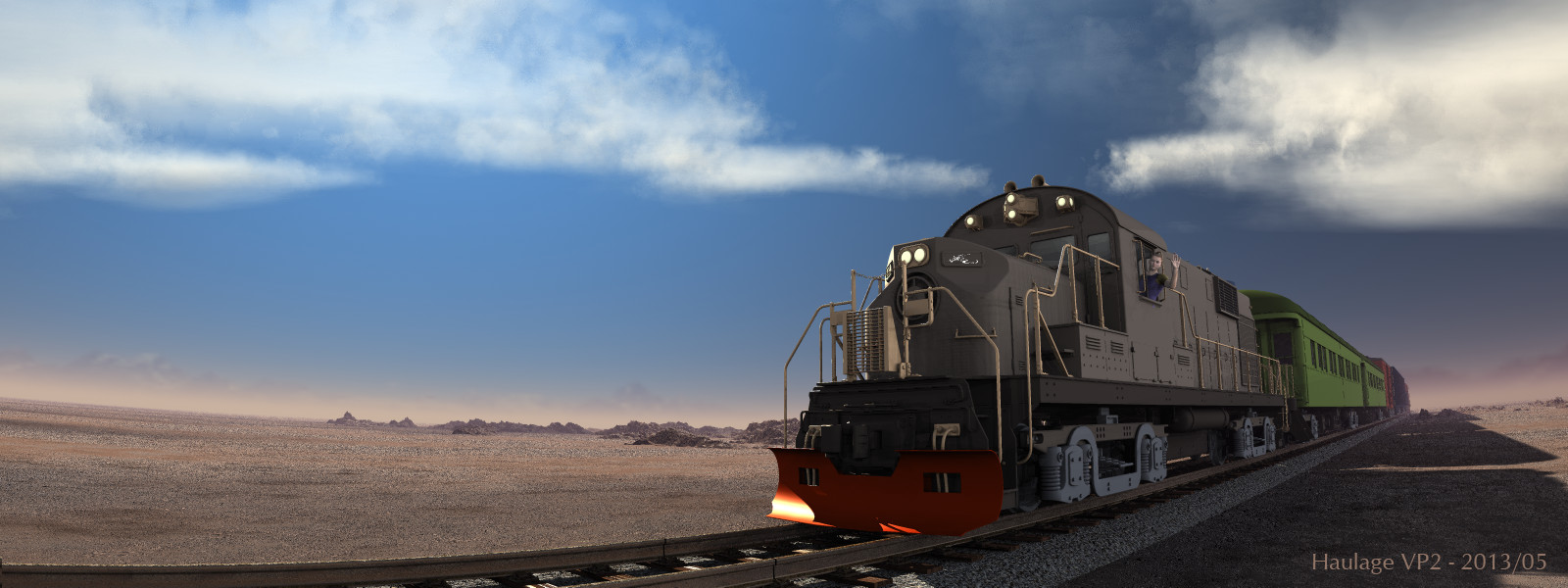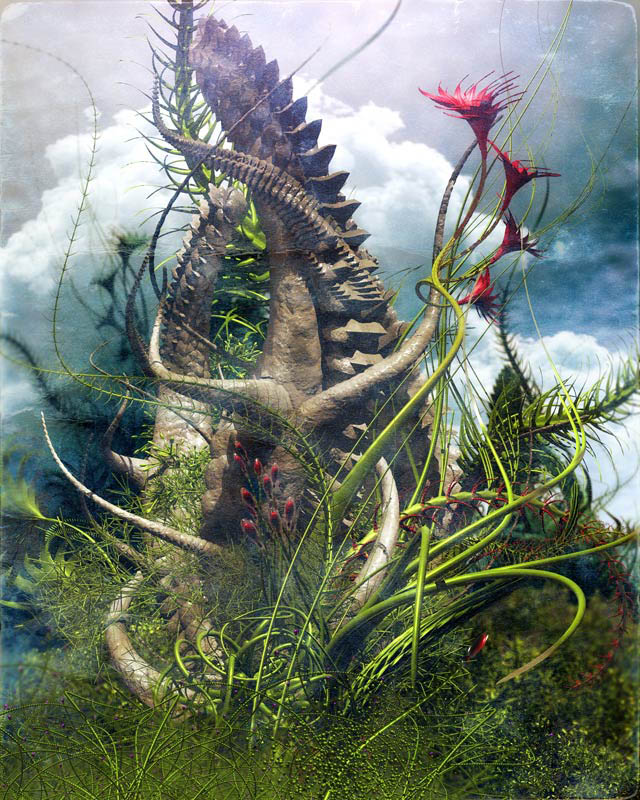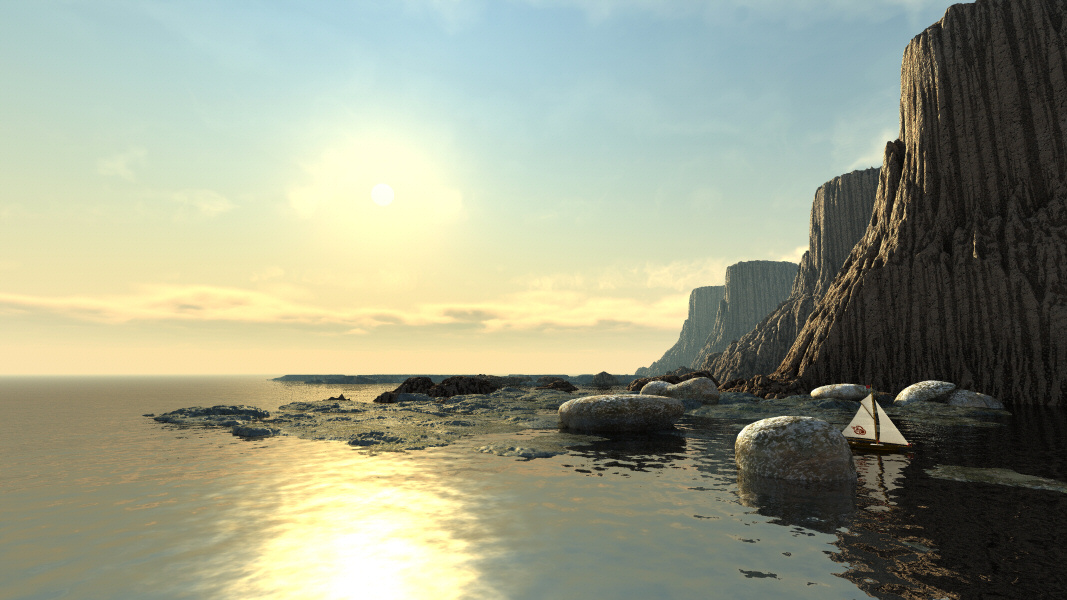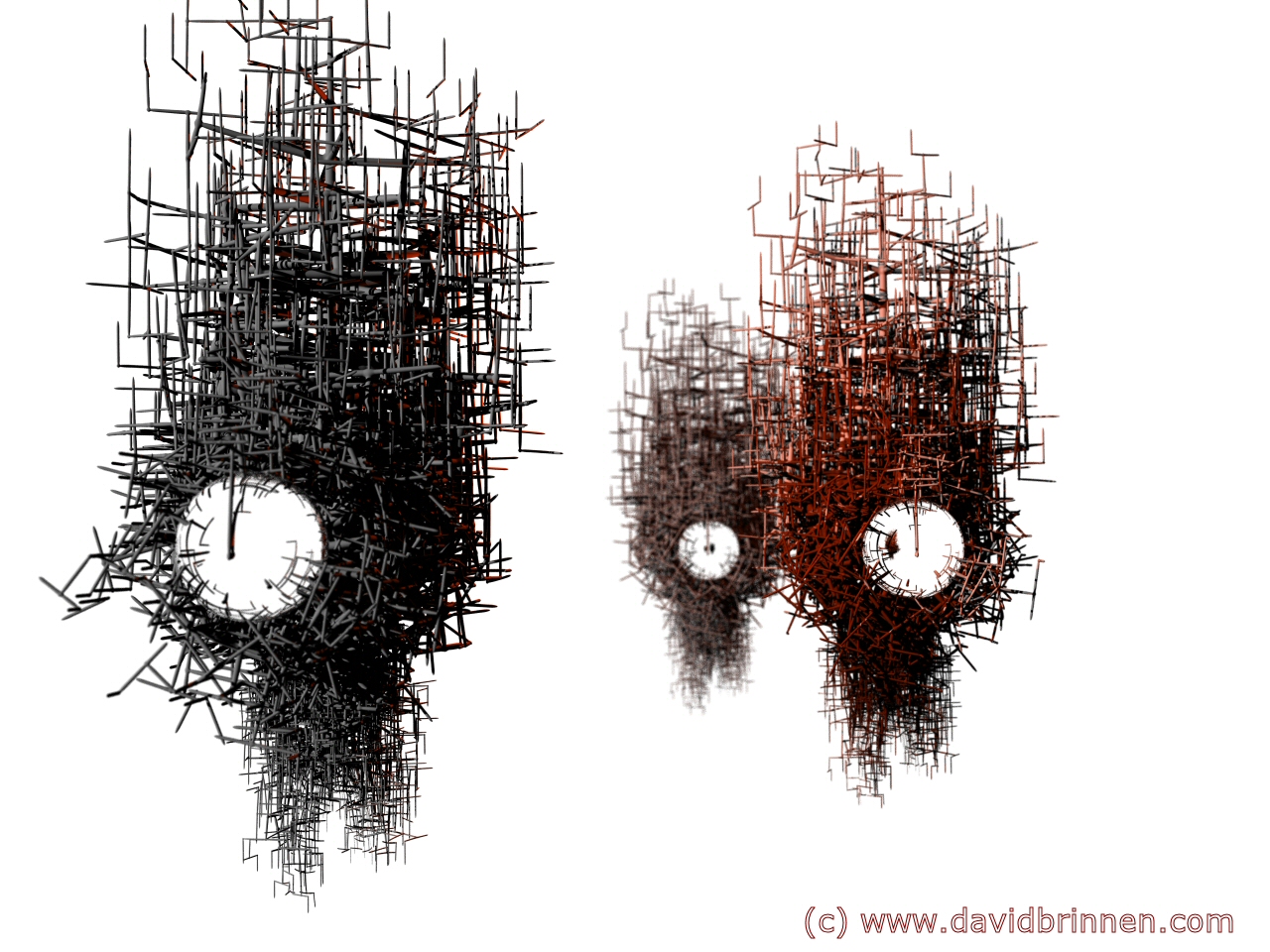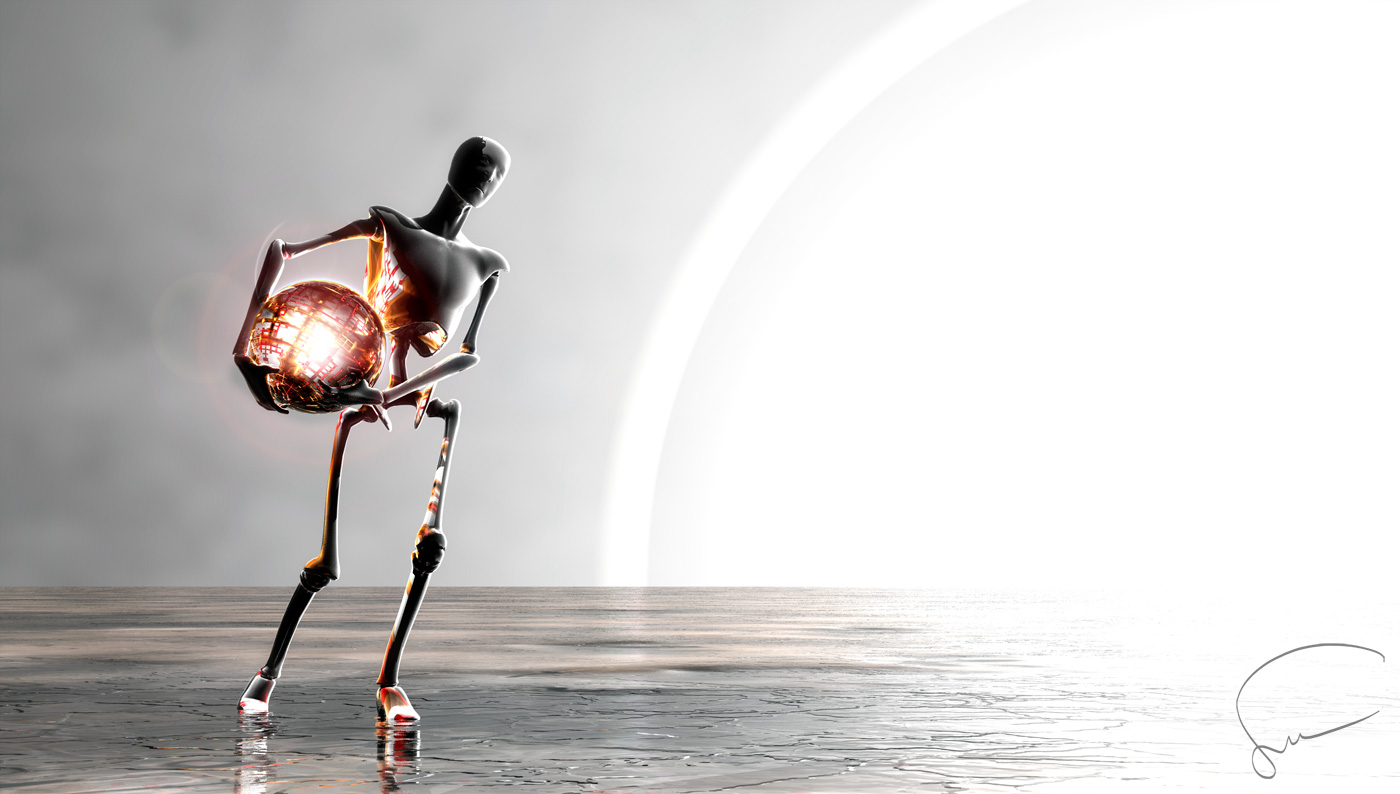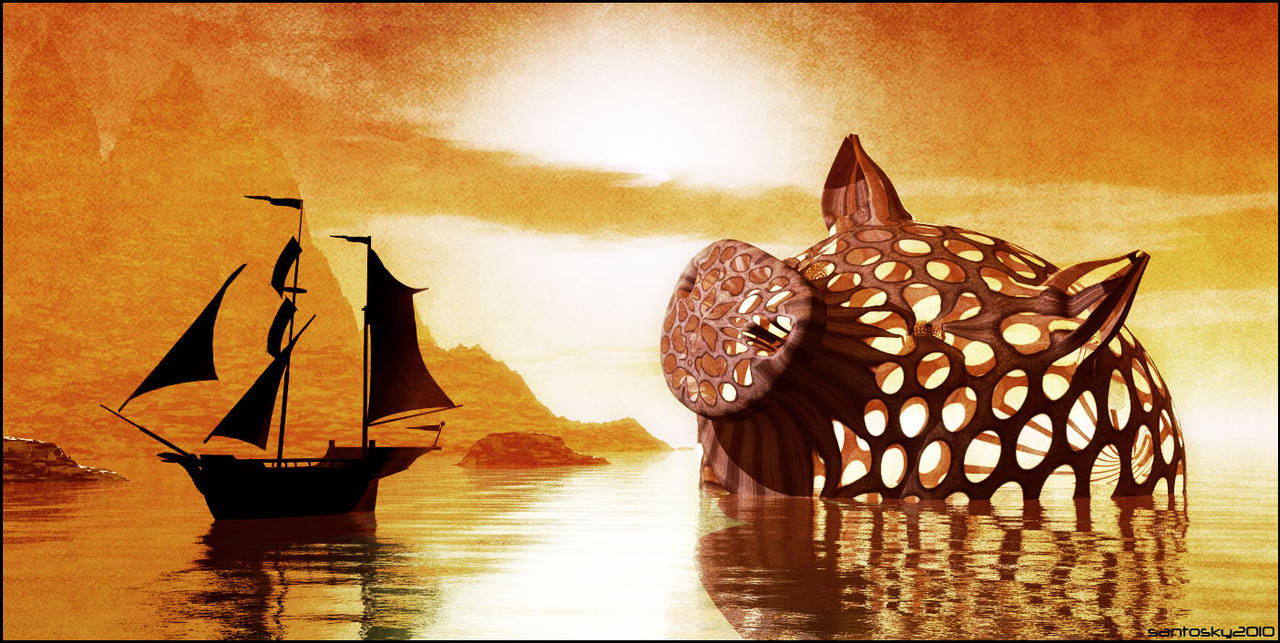Taking a trip through Horo’s gallery at Bryce5 and his personal site is a fascinating experience. The first thing you will likely notice is that Horo is a man of inquisitive nature with broad interests, many of them quite technical in nature, so it is perhaps quite fitting that Bryce and 3D imagery are among his hobbies. He draws from a deep pool of inspiration for his art, with a passion for optics, lenses, HDR images, and space exploration shining through into his work. Like David Brinnen, Horo’s work tends towards the technical and experimental, pushing Bryce to its limits and. Rarely, if ever, does Horo fall back on postwork techniques to cover limitations encountered in Bryce, instead focusing on finding in-program workarounds. Horo’s work is Bryce at its best, and it was with great relish that I had a chance to get his perspective on the program, and its future.
Tag Archives: 3d art
Bryce Artist Feature 03: Michael Frank
One cannot fail to be struck with some measure of awe by Michael Frank’s impeccably arranged and ambitious organic wonders. Surreal and other worldly landscapes and creatures loom out of his dreams to tantalise us with their digitised tendrils, enticing us to pause a moment or a minute or longer… maybe much longer, and ponder. Michael’s images speak of futures and realities and overlapping spaces where anachronisms meet with the timeless to exchange notes. His work is undoubtedly one of the most vivid examples that Bryce can be a tool for the creation of beautiful fine arts of the highest quality. It was an honour and a privilege to correspond with and bug Michael Frank for his thoughts on Bryce and how he uses it.
JW: How long have you been a Bryce user and what is it about Bryce that drew you in the first place? Continue reading
Bryce Artist Feature 02: David Brinnen
David Brinnen is an artist of the highest repute amongst the Bryce community. His art is an unrelenting experimental push towards mastery of the program. In this pursuit he has crossed many genres and styles, and while his images are often of a technical and experimental nature, his keen artistic insight renders breathtaking works that express an irrepressible enthusiasm for CGI and his chosen software.
David has been a Brycer since 2003 with an interest that stretches back another five years to 1997 when he first encountered a demo version of Bryce 2 with Computer Arts Magazine. At the time the price of both the software and requisite hardware were prohibitive. Recently I had the pleasure to correspond with David, talk Bryce, and become utterly mesmerised by his Bryce5 and DeviantArt galleries.
Bryce Artist Feature 01. SANTOSKY
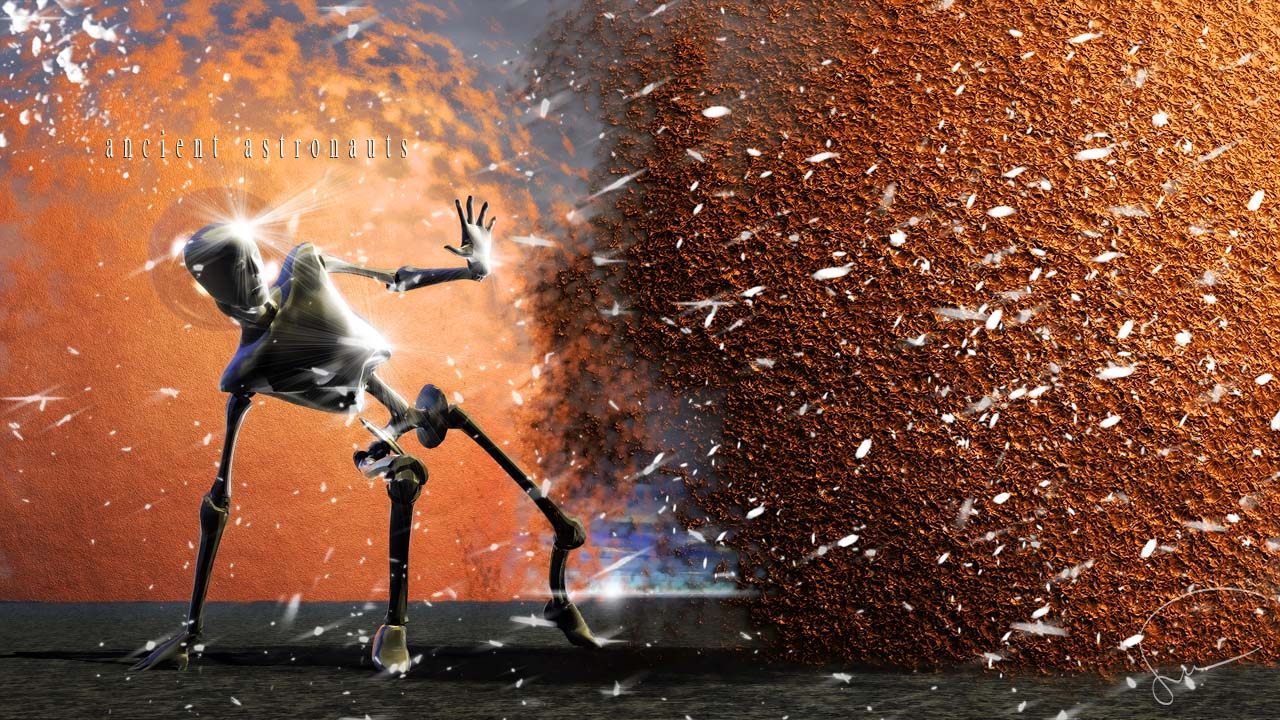
As part of the ongoing Bryce feature I recently spoke to a number of Bryce’s most vivid artists. I’ve long since admired the works that people are producing with Bryce, but it wasn’t until stumbling uponSantosky’s fun, exploratory surrealism that I ever felt compelled to look more into the program, not so much in terms of a new program to learn (got more than enough on the cook right now!), but as someone who is interested in 3D programs themselves almost as much as 3D art and its production. I contacted him directly through the site and soon we got chatting.
Santiago Gómez (aka Santosky) has been a Brycer since 2002 when he came across a demo version of Bryce somewhere on the vast internet. At the time Santiago was new to 3D, and his early usage of the program was casual and unassuming of the artist endeavours it would open up. Today, he cites the program as one of his main sources of inspiration, and says that it forms the basis of his work.
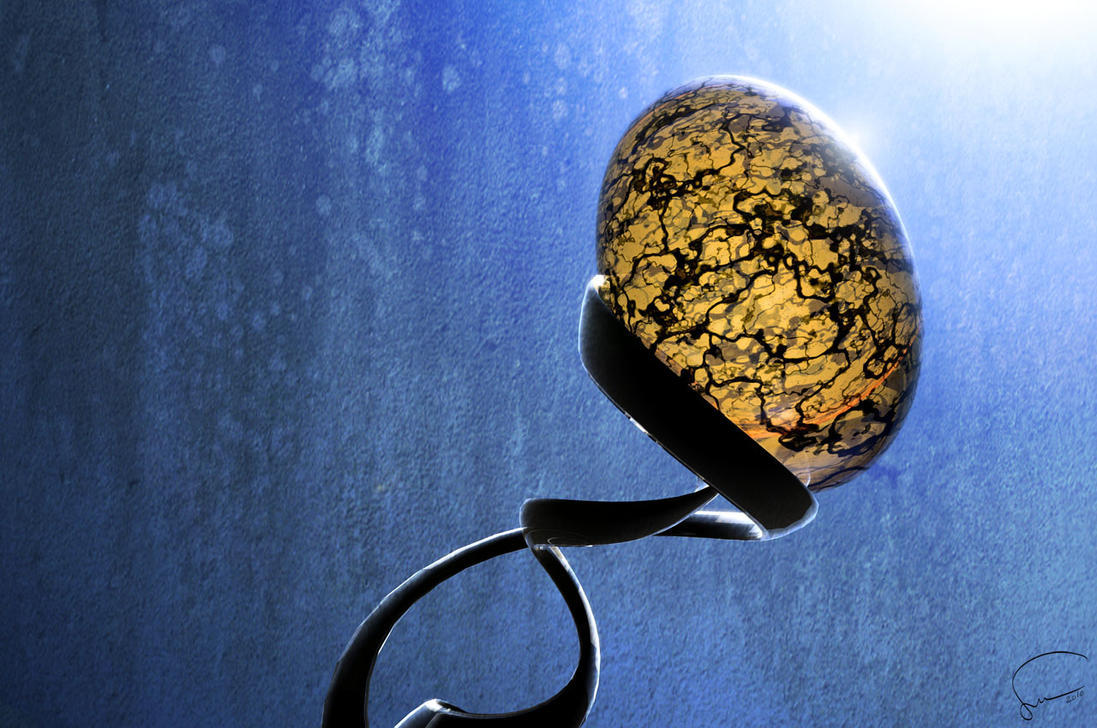
Santiago likes Bryce’s surface simplicity which allows him to create and light scenes rapidly, as can be seen with a quick browse of his image galleries that show a huge outpouring of high quality works. Santiago is under no illusions that his software of choice is beginning to show its age and lag behind rival software packages. He says the software has evolved little over the last ten years, and that there are several issues he comes up against time and again: the 32bit limitations of the software, restricted render size, and lack of more advanced modelling tools. Despite Bryce’s shortcomings he is quick to praise the intuitive interface, rapid scene construction and lighting tools, and points out that every day he discovers more of Bryce’s secrets.
Sadly he notes that Bryce has an uncertain future with its diminished commercial profitability and slow intermittent development. He would like to see DAZ or another developer “bet” on Bryce and build it back up into a competitive program. Given the apparently slim possibilities of a Bryce renaissance, he sees his future with software on the forefront of development with programs like ZBrush forming the top of his 3D toolbox. Users of a number of other 3D packages will no doubt commiserate on this sentiment, with users of Carrara (another of DAZ 3D’s holdings) being of particularly relevant note.
Next in the Bryce series I got to talk to one of Bryce’s most recognised maverick gurus, David Brinnen. David recently co-released (with fellow Bryce maverick and HDR Kingpin, Horo (who I also got to talk with)) Practical Bryce 7.1 Pro – Volume 1.

